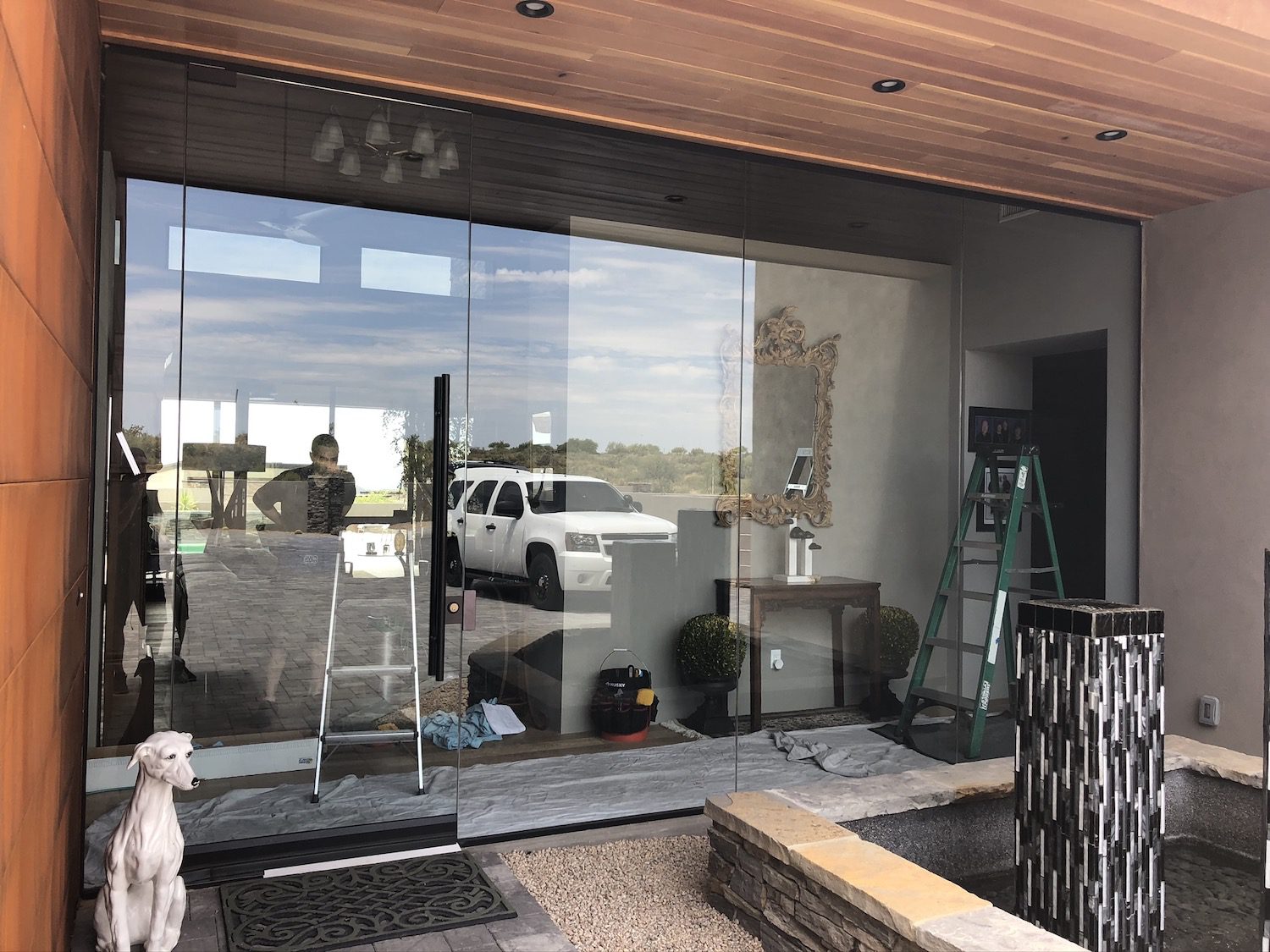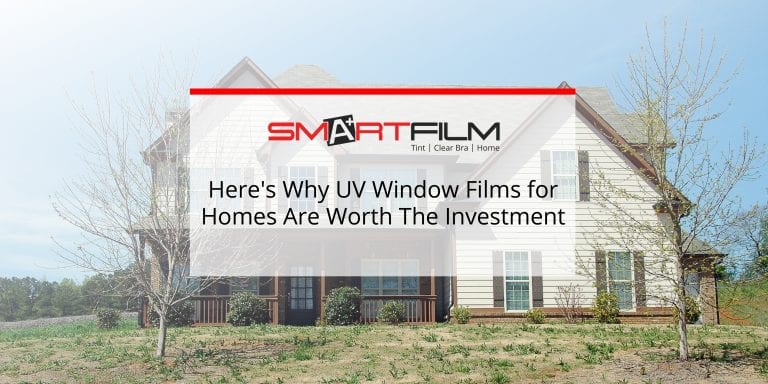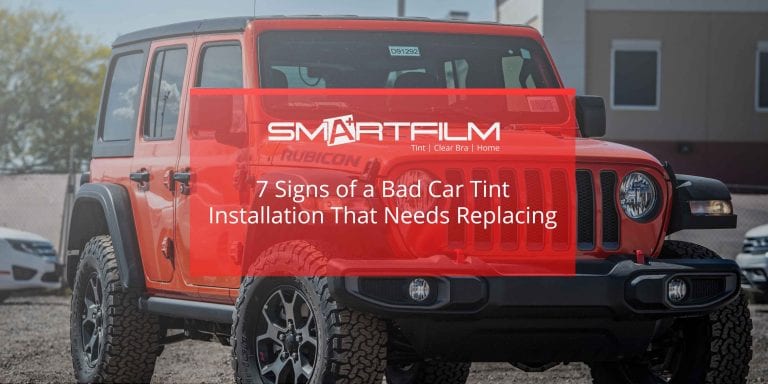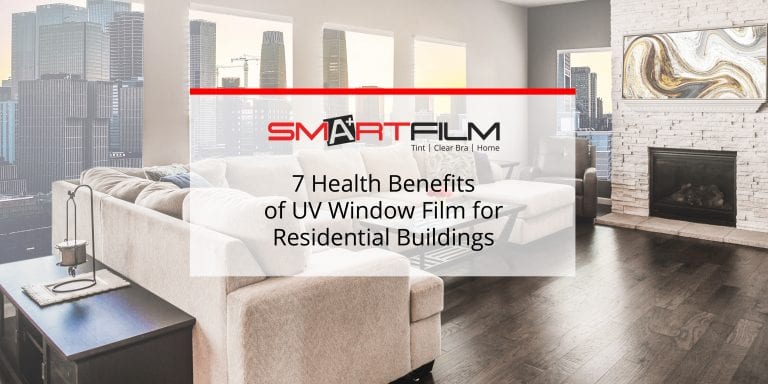How Solar Window Film Makes Your Home Cooler, Safer, and More Stylish
If you’re tired of battling excessive heat, glare, and sky-high cooling costs, it might be time to upgrade your windows without replacing them.
Solar window film for home offers a cost-effective, long-term solution to improve energy efficiency, protect your interiors, and save money, all while maintaining your home’s beautiful natural light and neutral appearance.
But how does solar film actually work? Can it really reduce the sun’s heat without making your windows look overly dark or reflective? And how much could you actually save on your energy bills?
In this article, we’ll explain everything you need to know about solar control film for residential windows, from the different types available to their significant benefits for both your comfort and your wallet.
You’ll learn how solar film helps reduce solar heat gain, blocks harmful UV rays, and cuts down on energy use, especially during Arizona’s hot summer months.
We’ll also explore how it compares to traditional window treatments like costly drapes or decorative curtains, and why it’s one of the smartest investments for year-round comfort.
Suppose you’re looking for an effective solution to reduce heat gain, preserve your interiors, and lower your energy bills, without compromising natural light. In that case, you’re in the right place. Let’s find out how the right window film can make a big difference.
Solar Window Film for Homes: What Makes Them So Effective?
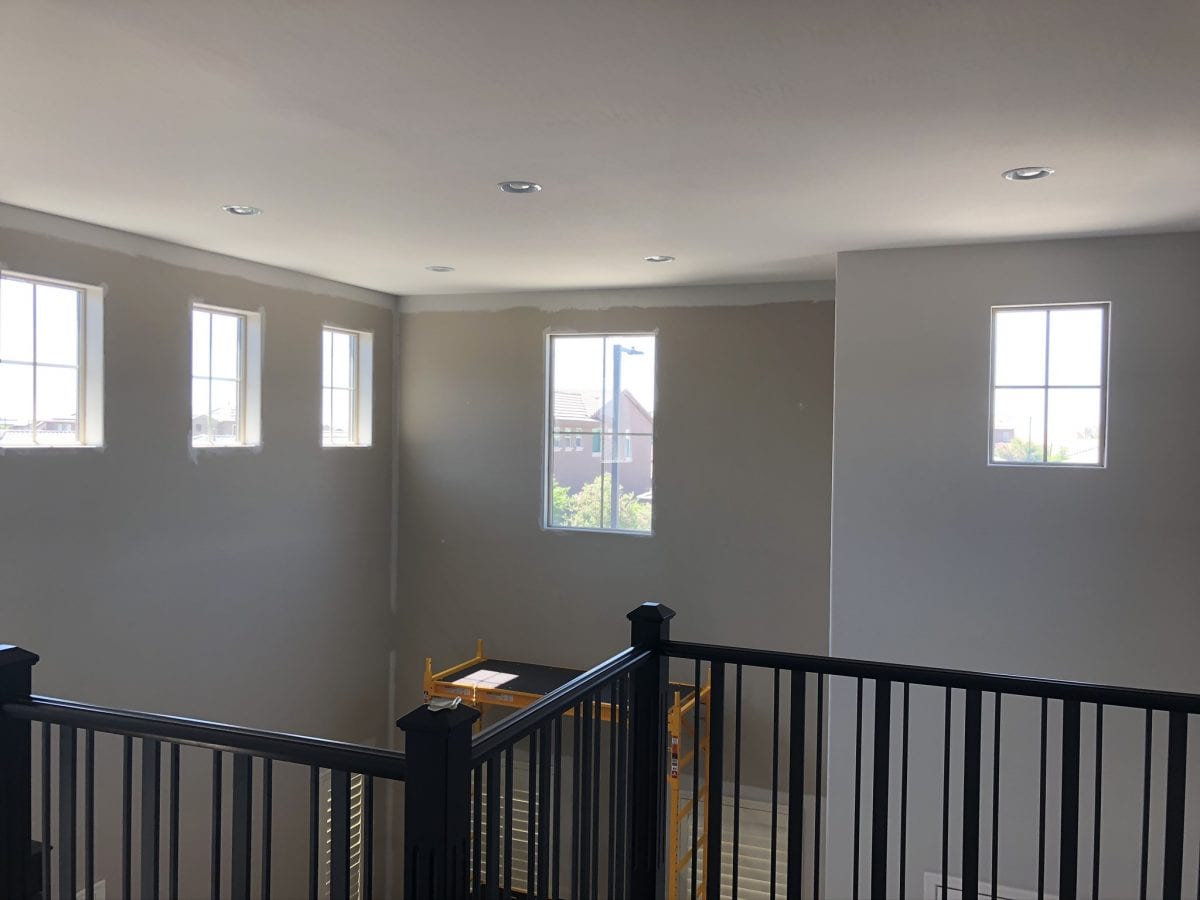
Solar window film is more than just a stylish upgrade, it’s a science-backed solution for improving energy efficiency and interior comfort. Made of ultra-thin layers of metals and polyester, these films are engineered to block harmful UV rays, reduce solar heat gain, and still allow natural light into your living space.
According to the U.S. Department of Energy, up to 30% of a home’s heating and cooling energy is lost through windows, which makes solar control film a smart investment for both comfort and cost savings.
Modern solar film products are available in a range of styles and shades, including low reflectance options with a neutral appearance, so you don’t have to sacrifice aesthetics for performance. Whether you’re looking to reduce glare, cut down on cooling costs, or protect your furniture and flooring from UV light, there’s likely a right window film for your needs.
And while some may worry that window film will darken interiors or limit views, today’s technology offers impressive temperature control and heat reduction, all without compromising natural light.
Still wondering if it’s worth it? Let’s talk about savings. Homeowners can expect a 10–15% reduction in annual energy bills with properly installed solar window tint. That means the film can often pay for itself within a few years, especially in hot climates like Arizona, where the sun’s heat and excessive heat gain are year-round challenges.
From decorative curtains to costly drapes, traditional window treatments may offer style, but solar control film delivers real performance and long-term value.
Natural Light, Heat Reduction, Dual Reflective: Types of Solar Control Window Films
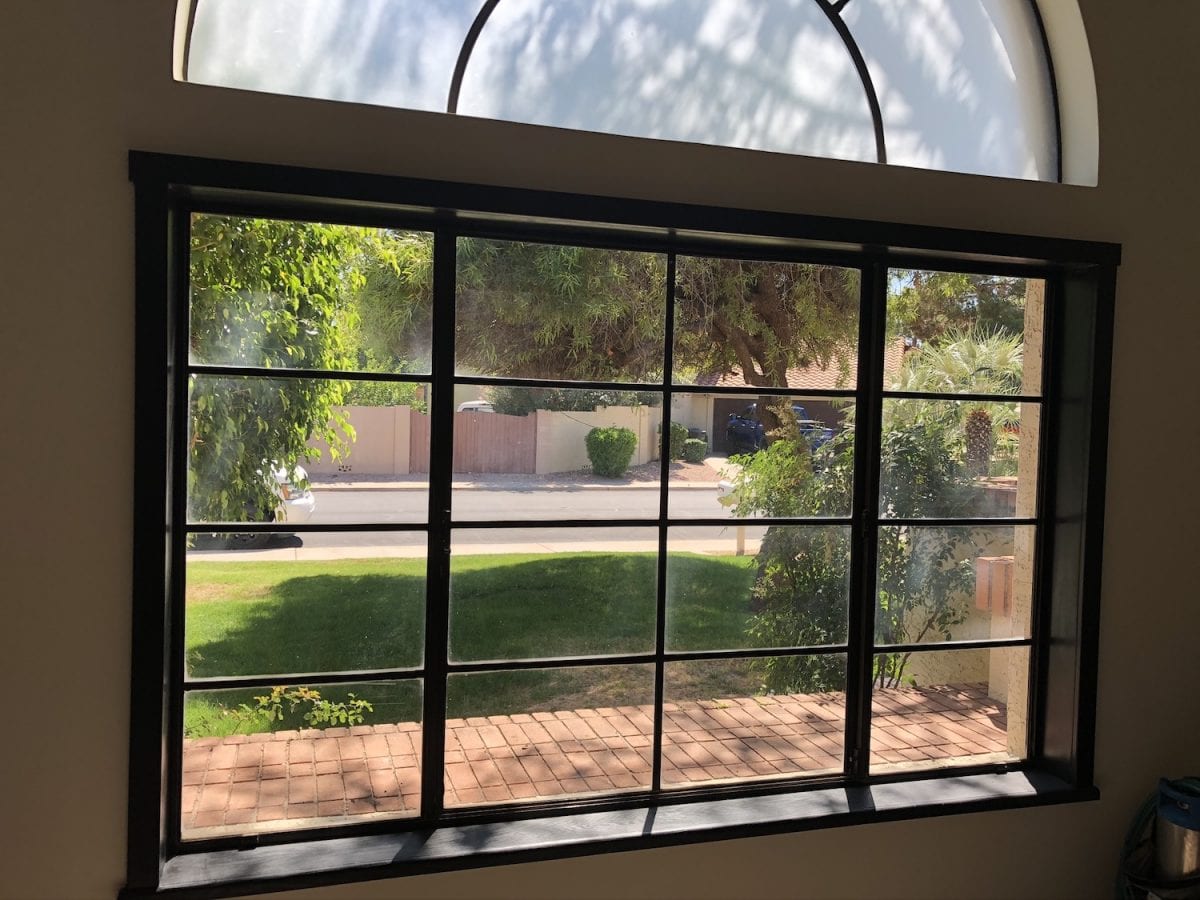
Each type has its strengths, and the best option depends on your home’s layout, climate, design preferences, and even your utility goals.
Let’s break down the most common types of solar control window films, so you can make a better choice:
1. Reflective Window Film (Mirror-Like Appearance)
Reflective films are known for their shiny, mirror-like finish. They work by reflecting a large portion of the sun’s heat and visible light away from your windows, drastically reducing solar heat gain and glare.
Best for: Hot climates, west-facing windows, large glass surfaces, and rooms that overheat.
Limitation: The shiny reflective exterior may not suit every home’s style or HOA regulations. However, it offers excellent privacy during the day.
According to the International Window Film Association, reflective films can reduce up to 79% of solar heat gain, a major contributor to cooling costs.
2. Dual-Reflective Window Film
Dual-reflective films offer a balance of performance and aesthetics. They feature a reflective outer layer for heat rejection and a less reflective interior for clearer indoor views at night.
Best for: Homeowners who want strong heat reduction and glare control without sacrificing interior clarity.
Limitation: Still slightly reflective from the outside, though less so than standard reflective films.
3. Non-Reflective (Dyed or Pigmented) Films
These films absorb solar energy rather than reflect it. They offer a more neutral appearance, blending seamlessly with most window styles without a shiny finish.
Best for: Subtle appearance, budget-conscious homeowners, and locations with mild sun exposure.
Limitation: Less effective at rejecting heat compared to metallic or ceramic films. Fading can occur over time if the dye quality is low.
4. Ceramic Window Film (Premium Performance)
Ceramic films use advanced nano-ceramic technology to block infrared heat, harmful UV rays, and glare, all while maintaining natural light and minimal reflectivity.
Best for: Homes with dual-pane windows, luxury properties, and homeowners wanting top-tier energy efficiency with low reflectance.
Limitation: Higher initial cost, but often pays off in energy savings. Can reject up to 80% of infrared heat and block 99% of UV rays.
5. Low-E (Low Emissivity) Films
Low-E films are designed to improve temperature control year-round. In hot seasons, they reflect heat outward; in cold months, they reflect indoor heat back inside.
Best for: Climates with seasonal changes and homeowners seeking year-round comfort and lower energy bills.
Limitation: Less common and typically costlier, but ideal for those looking to save energy all year.
Installing Solar Window Film in Your Home: Key Benefits

From reducing heat gain and glare to blocking harmful UV rays, solar control window films are designed to do more than just cover your glass; they actively work to protect and optimize your living space.
Let’s explore the key benefits of installing solar window film and how it can make your home more efficient, comfortable, and cost-effective year-round.
1. Energy Efficiency and Solar Control Film
One of the biggest draws of solar control window film is its ability to boost energy efficiency by regulating indoor temperature. Standard windows are notorious for letting in the sun’s heat in summer and allowing indoor warmth to escape in winter. This not only compromises comfort but also forces your HVAC system to work harder.
According to Madico, high-performance solar window films can reject up to 81% of solar energy, meaning your air conditioner doesn’t have to fight against outdoor temperatures all day long. In cooler months, certain films help retain heat, minimizing the need for excessive heating.
The result? Lower energy consumption, less strain on your HVAC system, and reduced energy bills—a win-win for both your wallet and the planet.
2. Glare Reduction for Visual Comfort
Have you ever tried to work on your laptop, watch TV, or read a book near a sunny window, only to squint the whole time? That’s glare, and it can lead to eye strain, headaches, and general discomfort.
Solar control film helps reduce this harsh light without darkening your rooms or requiring you to close the blinds during the day. With less glare, you can enjoy better visibility, improved productivity, and more relaxing indoor activities.
For optimal glare reduction, choose a film with strong visible light filtering while still preserving natural light, ideal for open-plan living rooms and home offices with large windows.
3. Protects Your Home and Enhances Safety
Solar window films don’t just offer comfort; they also provide an extra layer of protection. While they aren’t a substitute for storm shutters or security systems, films do help reinforce the glass itself.
In the event of impact, whether from windblown debris, accidental breakage, or even an attempted break-in, the film holds shattered glass together, reducing the risk of injury and increasing your home’s Safety.
For homeowners looking to improve their security discreetly, this feature adds a practical benefit without compromising aesthetics.
5 Powerful Ways Solar Window Film for Homes Helps You Save Money

Installing solar window film is also about saving real money, increasing your home’s comfort, and extending the life of your furnishings, HVAC system, and even your windows themselves.
Let’s dive into five major benefits, with a focus on how each one can reduce your energy bills, cut replacement costs, and add serious value to your property.
1. Cut Heating and Cooling Costs
Most homeowners assume their front door is the biggest source of energy loss, but the thing is, your windows are the real culprits. Solar window film acts like an invisible thermal shield.
In summer, it blocks the sun’s heat, minimizing solar heat gain and lowering indoor temperatures. In winter, low-E and ceramic films can help reflect indoor warmth back inside, improving temperature control and reducing the need for constant heating.
This means your HVAC system runs less often and more efficiently, leading to noticeable savings.
Bonus: Less HVAC use means fewer maintenance needs and a longer lifespan for your expensive system.
2. Extend the Life of Furniture, Flooring & Decor
Natural light makes a home feel open and airy, but too much of it can quietly wreak havoc on your interiors. UV rays passing through untreated windows cause fading, discoloration, and drying of everything from wood flooring and leather chairs to valuable artwork and curtains.
Many solar control window films block up to 99% of UV radiation, preserving the look and feel of your home’s interiors for longer.
That $2,000 leather couch or custom hardwood floor stays newer, longer, and you avoid premature replacements or costly refinishing jobs.
Want to keep your natural light? No worries, modern window films reduce damage without sacrificing visible light or altering your home’s look.
3. Protect Your Skin
Most people don’t think they’re at risk for sun exposure when relaxing in their living room. Still, UV rays easily pass through untreated windows, even on cloudy days. If you’ve ever felt that sunburn sensation while sitting on your couch, you’re not imagining it.
Window tint for home windows not only protects your belongings, but it also safeguards your skin. Prolonged indoor exposure to UV radiation can lead to premature aging, wrinkles, and even skin cancer, especially in rooms with large south- or west-facing windows.
The Skin Cancer Foundation states that up to 90% of skin aging is caused by UV exposure, and the same principle applies to your belongings. And remember: glass alone blocks only 25% of harmful UV rays.
Applying sun protection film to house windows is like applying SPF to your home. And unlike sunscreen, it doesn’t wear off or need to be reapplied.
Money-saving bonus: The less sun damage your skin suffers, the less you’ll spend on costly anti-aging creams, laser treatments, or dermatologist visits.
4. Make Older Windows More Efficient
Replacing windows is one of the most expensive upgrades a homeowner can face. According to Angi, the average cost of replacing 10 windows is between $3,000 and $10,000+, depending on style and quality.
But what if you could extend the lifespan of your existing windows instead?
Solar film acts like an additional insulating layer, improving the solar heat gain coefficient of single-pane or even dual-pane windows. By reducing heat gain in the summer and retaining indoor warmth in the winter, your home feels more comfortable and stable.
While window film can’t fix broken seals or structural issues, it can postpone the need for full replacement, buying you time to budget or plan for a major renovation.
Tip: Films are especially useful for homes with large picture windows, older architectural glass, or rooms where replacing windows would require significant construction.
5. Improve Safety & Glass Durability
Most people associate window tint with heat and light control, but it also provides an important layer of physical protection.
Solar window film is made with adhesive-backed polyester layers that bond tightly to the glass. Suppose the window is struck by flying debris, a tree branch, or even a potential intruder. In that case, the film helps hold the shards in place, reducing the risk of injury and preventing easy break-ins.
This feature is especially valuable during the monsoon season in Arizona or in neighborhoods where break-ins are a concern. Think of it as a passive security feature built into your windows, one that doesn’t require electricity or alarm systems.
Additional peace of mind: Many homeowners’ insurance providers offer discounts for security improvements like impact-resistant windows or films.
How to Choose the Right Solar Window Film for Your Home
Choosing the best solar window film starts with understanding what you want it to do and where.
Are you trying to reduce heat? Block UV rays? Add privacy? Or maybe all of the above?
Let’s explain so you can find the perfect fit.
1. Identify Your Main Goals
Start with your “why.” If your home overheats during the day, prioritize films that offer high heat rejection.
If you’re concerned about fading furniture or skin protection, focus on films with 99% UV blocking capability. Need daytime privacy without heavy window coverings? Reflective or dual-reflective films may be the solution.
2. Understand the Types
Each film has strengths. Reflective films reflect sunlight, keeping interiors cool. Ceramic films offer excellent heat and UV rejection without changing your view.
Neutral films are barely noticeable and maintain a natural look. For year-round insulation, look for low-E films, which help retain indoor warmth during colder months.
3. Consider Your Windows
Not all films are suitable for every window type. Homes with dual-pane windows require specific films to prevent heat stress. Also, consider window orientation—south- and west-facing windows get the most sun and may benefit from stronger solar control properties.
4. Match Aesthetics and Functionality
Finally, think about how you want the film to look. Do you want something sleek and subtle, or bold and reflective? Some films even come with decorative patterns, blending style with performance.
Is Solar Film Right for Your House?
Think about your home maintenance budget and decide if the savings provided by sun protection film would make a huge difference in your budget. If the answer is “yes,” get an estimate as soon as possible. The sooner you get the film installed, the more money you’ll save.
Our expert window tinting and paint protection film services in Mesa, Tempe, Gilbert, and the surrounding Arizona metro area will keep your car cooler, protect your loved ones from UV rays, and maintain its pristine condition. Visit our website or shop to explore the perfect tint for your vehicle!
FAQ’s
Will My Windows Look Too Dark or Shiny?
Modern solar films come in a wide range of tints, shades, and reflectivity levels. If you’re worried about aesthetics, ask your installer about neutral appearance, low reflectance, or nearly invisible and even ceramic film options.
Will it Reduce Too Much Natural Light?
Not at all. Films are designed to filter sunlight, not block it. In fact, many homeowners notice rooms feel brighter and more usable because glare is reduced, while light is still soft and balanced.
Can I Install it Myself?
While DIY kits exist, professional installation ensures the best performance, longest lifespan, and avoids issues like bubbling, peeling, or uneven coverage. Plus, many pre-installed films come with warranties of 10–15 years or more.
